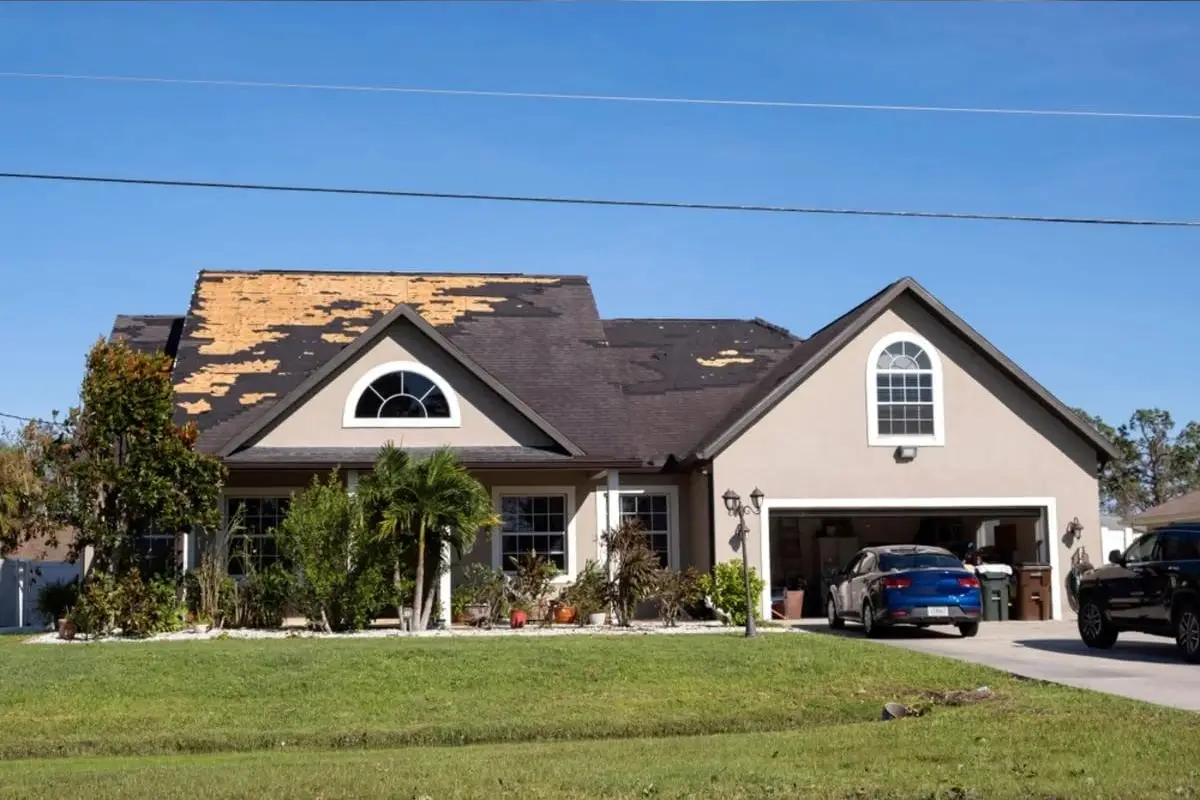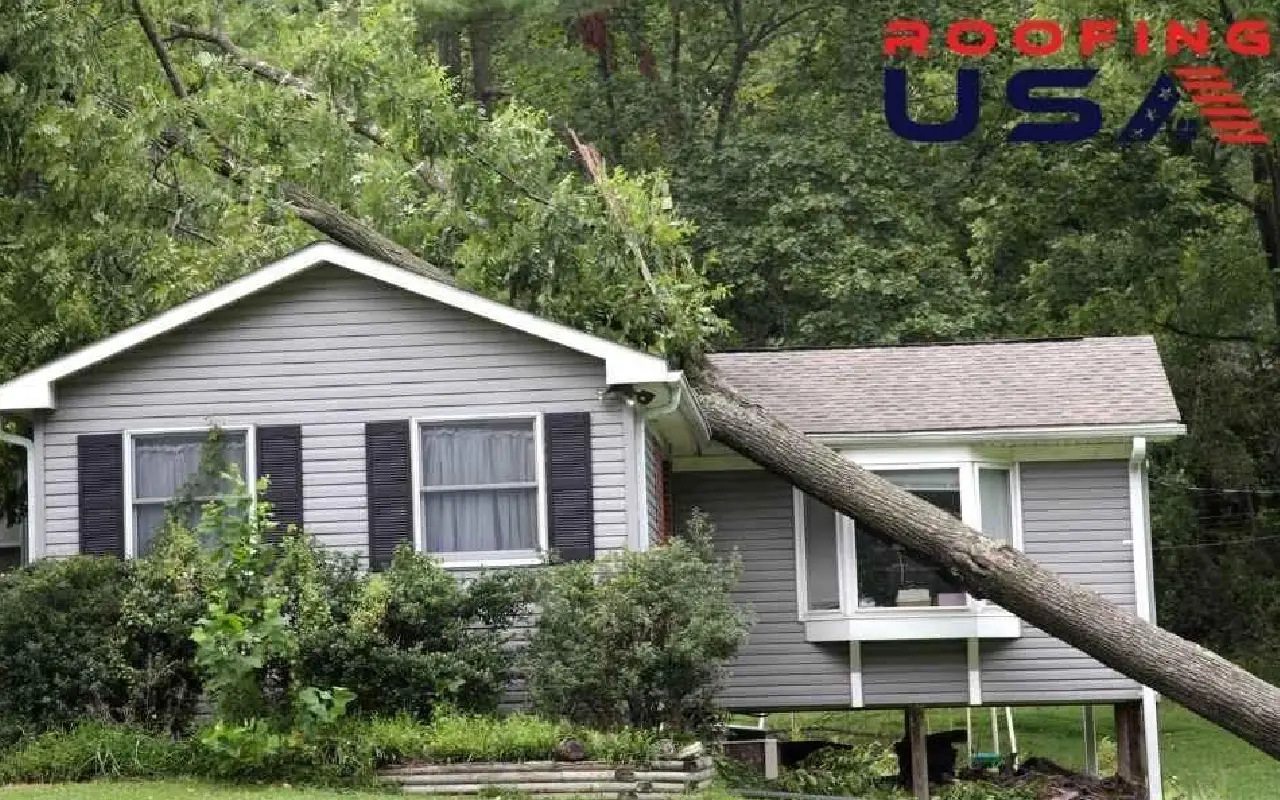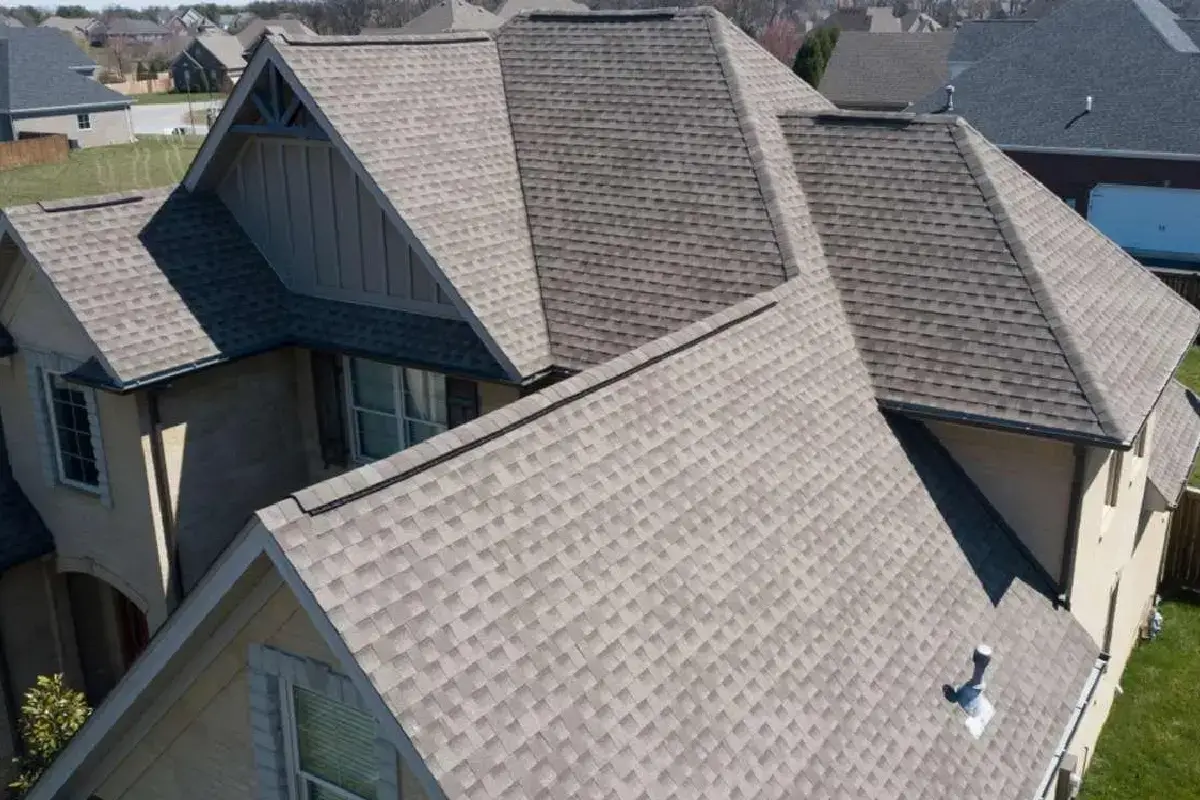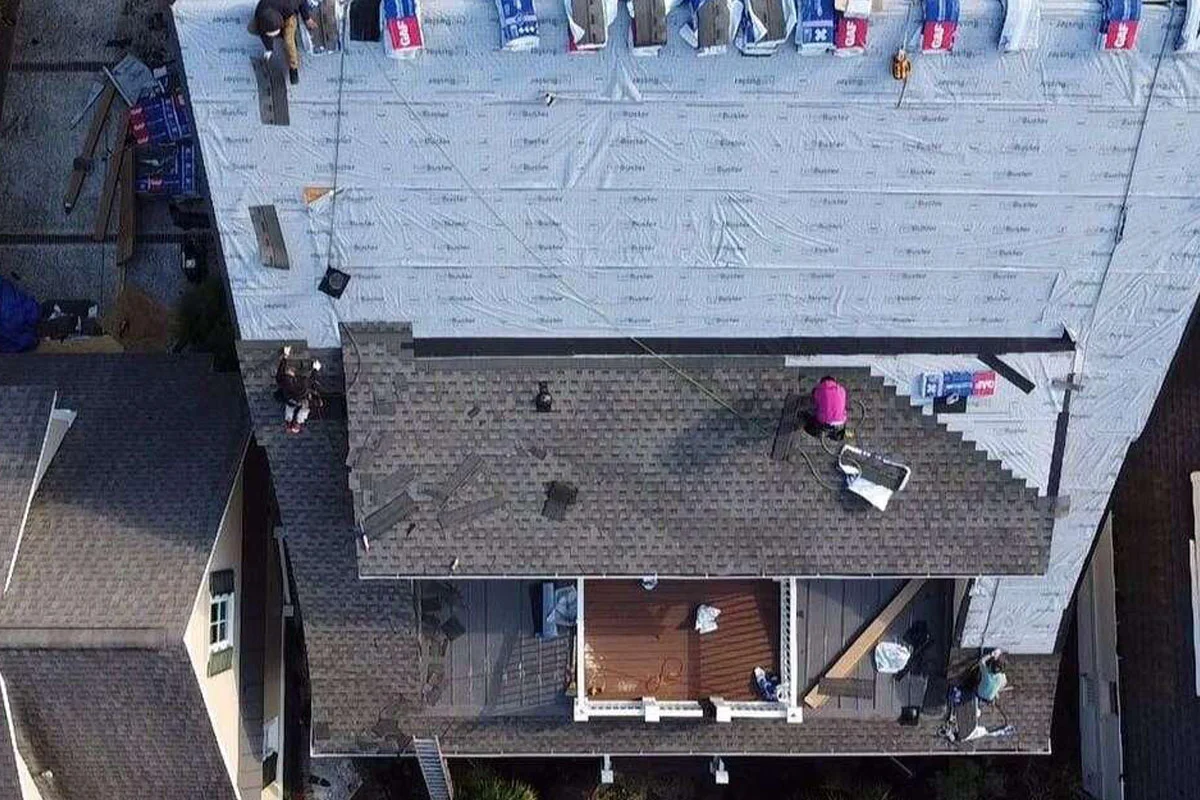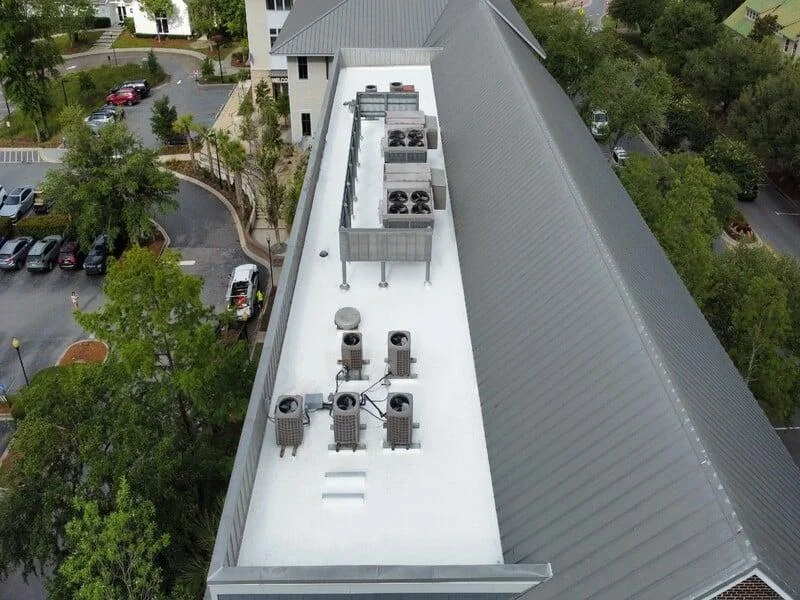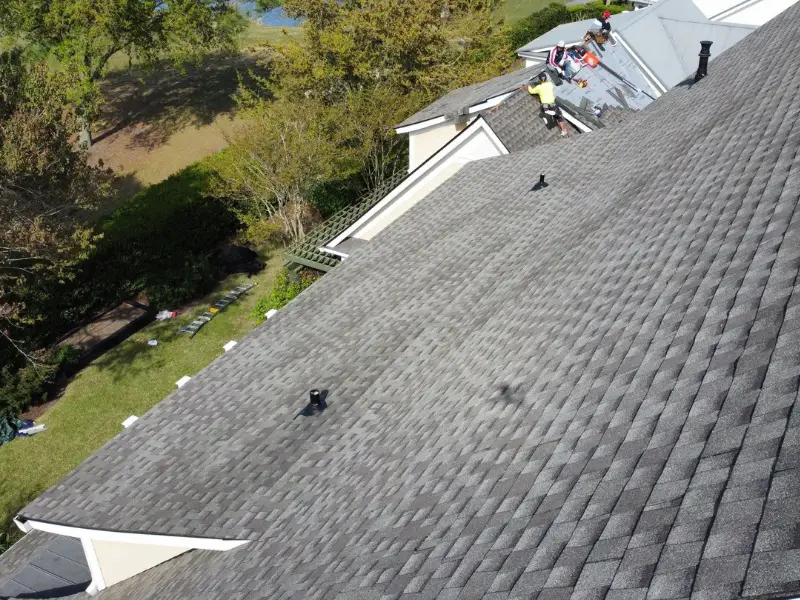Your roof is the first line of defense against the elements. It protects you , your family, and your valuable belongings from the harsh realities of Mother Nature. However, over time, your roof’s ability to withstand storms and other weather events can decrease.
Understanding the relationship between roof age and susceptibility to storm damage is essential for homeowners, especially those in South Carolina.
In this post, we’ll explore the reasons why older roofs struggle more in storms, the importance of regular maintenance and timely repair, and the cost implications of replacing old roofs versus repairing them.
Roof Aging: What Happens Over Time?
Your roof is constantly exposed to the elements, enduring daily wear and tear from natural and environmental factors . Over time, the effects of these stressors can have a significant impact on its durability, aesthetics, and functionality.
One of the most visible signs of aging is the gradual loss of granules from the shingles. These granules are crucial in protecting your roof from the sun’s harmful UV rays and enhancing its fire resistance. As these granules wear off, your roof becomes more vulnerable to sun damage, which can result in cracking and splitting.
In addition to the effects of aging, environmental factors such as wind, rain, snow, hail, and even tree damage can further weaken your roof’s structure. Strong winds can lift shingles or other roofing materials, creating openings that allow water to penetrate your home. Moreover, regular heavy rain can lead to leakages, causing additional deterioration to the overall integrity of your roof.
It is important to be aware of these factors and take proactive measures to maintain and protect your roof’s longevity. Regular inspections and timely repairs can help mitigate the impact of these hazards, ensuring that your roof remains strong and resilient against the tests of time and nature.
Why Older Roofs Struggle More in Storms
Older roofs, due to their deteriorated sealing and binding agents, as well as brittle materials, are highly susceptible to damage during storms . The wear and tear over time can cause shingles, adhesive materials like sealants, and flashing to contract and expand, creating gaps that allow water to seep into your home.
Moreover, the brittle nature of materials like wood and asphalt shingles can further contribute to the vulnerability of older roofs. These materials, becoming less flexible over time, are prone to cracking and breaking during high winds and hailstorms.
It’s important to note that older roofs may also lack compliance with modern building codes and standards, which significantly increases their susceptibility to wind or water damage.
Therefore, it is crucial to be aware of the potential risks associated with older roofs and take appropriate measures to ensure their maintenance and protection during stormy weather conditions.
Technological Advances: How Today’s Roofs Differ from Older Models
Today’s roofs are vastly superior to their predecessors, primarily due to advancements in technology and materials. Modern roofing systems are designed with durability in mind , equipped with improved water and wind resistance features, and constructed using materials that are both environmentally friendly and energy efficient.
Innovation in Roofing
The roofing industry has seen a surge of innovations in the last few decades, offering homeowners a wider range of practical, durable, and aesthetically pleasing options.
Here are some significant developments:
- Architectural Shingles: Unlike the traditional 3-tab shingles, architectural or dimensional shingles, provide a three-dimensional appearance and offer superior durability. They are heavier, more wind-resistant, and can withstand harsh weather conditions better.
- Cool Roofs: With increasing emphasis on energy efficiency, cool roofs have been a game-changer. These roofs reflect more sunlight and absorb less heat, reducing cooling costs during hot weather.
- Green Roofs: Environmentally friendly roofing options have seen a rise in popularity. Green roofs, also known as living roofs, involve the growth of vegetation on the rooftop, providing natural insulation, reducing stormwater runoff, and helping to mitigate the urban heat island effect.
- Solar Shingles: Solar technology in roofing materials has enabled homeowners to generate electricity. Solar shingles or tiles blend seamlessly with other roof shingles and provide an aesthetically pleasing way to reduce energy costs.
- Synthetic Roofing Materials: The use of synthetic materials in roofing has dramatically increased. Resilient and lightweight, synthetic roofing materials like rubber, plastic, and polymer roofing imitate traditional roofing materials and offer enhanced durability and weather resistance.
- Metal Roofs: Although not new, recent advances have improved the design, coating, and color options of metal roofs. Metal roofs are now more attractive, durable, and energy-efficient, making them a popular choice for modern homes.
- Drone Inspections: Technological advancements in the roofing industry are not limited to materials alone. The use of drones for roof inspections has increased, providing a safer and more efficient method to assess roof conditions.
These technological advancements in roofing materials and methods contribute significantly to roof durability and efficiency. Homeowners now have a wide array of choices, allowing them to select options that best suit their needs, preferences, and local weather conditions.
Enhanced Durability of Modern Roofing Systems
Modern roofing systems are designed with enhanced durability in mind, which translates into longer life spans and less susceptibility to storm damage. This durability is primarily achieved through advanced materials and innovative construction techniques.
For instance, architectural shingles, made from a fiberglass base topped with ceramic-coated minerals embedded in water-resistant asphalt, are designed to withstand high winds and heavy rain.
Also, modern metal roofing is typically coated with a durable, weather-resistant finish that can last several decades without significant degradation.
Synthetic roofing materials, often made to mimic the look of traditional roofing materials, are engineered for longevity and resilience. They’re resistant to UV radiation, fire, and weather extremes, making them a durable choice in a variety of climates.
Similarly, advances in installation techniques, such as improved sealing methods and stronger fastening systems, have increased the storm resistance of modern roofs.
For instance, modern roofing systems often use a continuous, adhesive underlayment designed to seal around roof penetrations and provide a second line of defense against water intrusion.

Cost Implications: Repairing Old Roofs vs. Replacing
When it comes to replacing or repairing your roof, there are certain scenarios where a roof replacement becomes the more economical choice. Factors such as extensive damage, advanced age of the roof, and the cost comparison between repairs and replacement should be carefully considered.
While repairing your roof may initially seem like a cost-effective option, it may not provide a lasting solution. In these cases, a roof replacement offers long-term benefits that go beyond just addressing the immediate issues.
By opting for a roof replacement, you can avoid the inconvenience and expense of recurring repairs, ensuring peace of mind for years to come.
Furthermore, a new roof can also greatly enhance the energy efficiency of your home. With advancements in roofing materials and insulation, a roof replacement can help reduce energy consumption and lower utility bills.
Another advantage of a roof replacement is the potential increase in the resale value of your property. A new, well-maintained roof is an attractive feature for potential buyers and can significantly improve the overall curb appeal of your home.
This can translate into a higher selling price and a faster sale when the time comes to put your property on the market.
Planning Ahead: Setting a Roof Replacement Timeline
In preparing for a roof replacement, it’s important to establish a timeline that aligns with your budget, lifestyle, and the expected lifespan of your current roof. This allows you to plan and avoid unexpected costs, ensuring that your home remains protected and comfortable for years to come.
How to Estimate Your Roof’s Lifespan
To estimate the lifespan of your roof, you can consider the following factors:
- Maintenance: Regular maintenance and timely repairs can extend the lifespan of your roof. Ensure that you address any issues promptly.
- Environmental Elements: Factors such as extreme weather conditions, exposure to sunlight, and heavy rainfall can affect your roof’s longevity. Assess how these elements impact your specific location.
- Quality of Installation: A well-installed roof is more likely to last longer. If your roof was installed professionally with high-quality materials, it may have a longer lifespan.
- Roofing Material: Different roofing materials have varying lifespans. Research the expected lifespan of the specific material used for your roof.
- Hiring a Professional: Consider hiring a roofing contractor for a professional inspection. They can assess the current condition of your roof and provide an expert opinion on its remaining lifespan.
By considering these factors, you can maximize the remaining lifespan of your roof and make informed decisions about replacement or repairs.
How to Budget and Prepare for Replacement
When it comes to budgeting and preparing for replacement, there are a few key steps to consider.
First, homeowners should assess the current condition of their roofs and determine if replacement is necessary shortly. This can be done by evaluating any signs of wear and tear, such as leaks or missing shingles.
Once the need for replacement is established, it’s important to estimate the project cost. Factors like the square footage of the property and the preferred type of roofing materials will play a significant role in determining the overall expenses. Consulting with roofing professionals or obtaining multiple quotes can help homeowners get a clearer picture of the potential costs involved.
In addition to estimating the financial aspect, it’s crucial to create a budget specifically for the replacement project. This budget should consider the cost of materials and labor and any additional expenses that may arise, such as permits or unexpected repairs.
By setting aside a dedicated amount for the replacement, homeowners can better prepare themselves financially and minimize the risk of unforeseen expenses.
Lastly, homeowners should consider exploring financing options if needed. Whether it’s through personal savings, home equity loans, or financing programs offered by roofing companies , having a plan in place to cover the costs can provide peace of mind and make the replacement process more manageable.

Get a Roof Repair or Inspection With the Best Roofing Company Columbia, SC Offers
Understanding the relationship between roof age and susceptibility to storm damage is vital for homeowners. Regular roof maintenance and timely repair are essential for prolonging your roof’s lifespan and avoiding costly repairs.
When it comes time for replacement, investing in modern roofing solutions can provide better long-term benefits , including energy efficiency and increased resale value.
Consult with a local roofing company, like Roofing USA in Columbia, SC, to assess your roof’s condition and discuss your replacement options.
At Roofing USA, we provide comprehensive roofing solutions tailored to your unique needs. Whether it’s a simple repair, routine maintenance, or a complete roof replacement, our team of experienced professionals is committed to delivering quality work and superior customer service.Contact us today and let us take care of your roofing needs!


